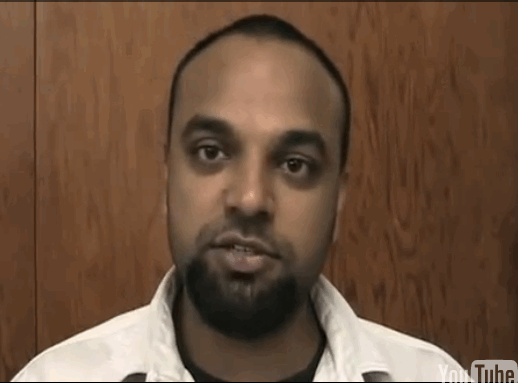
Sriram, summer 2005 alum, organizes with The Minnesota Break the Bonds Campaign, a campaign to divest Minnestota state investments from war profiteers.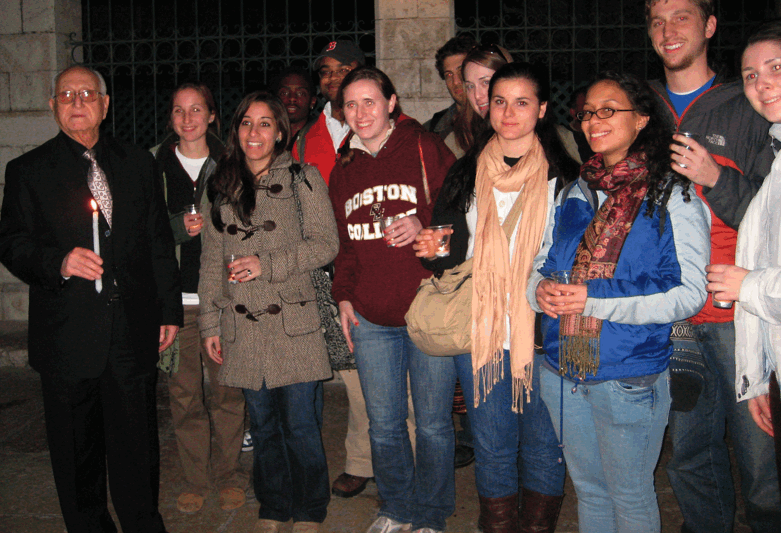
Lindsey, winter 2009 alum, Birzeit University Right To Education Campaign, an effort to defend Palestinians’ right to education.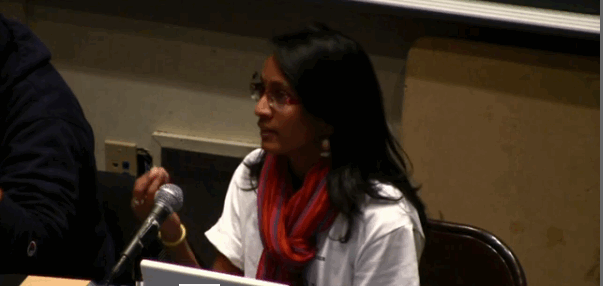
Kanye, summer 2007 alum, in To Know is Not Enough: How Hampshire Became the First to Divest.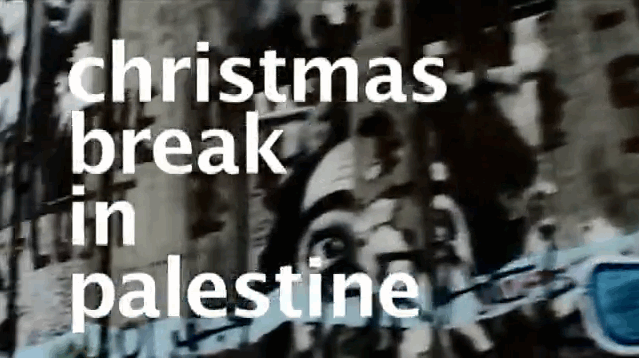
Ashley McAdam, Becky Barbrow, and Stuart (William) Pike, three of our 2010 alums, are behind the short documentaryChristmas Break in Palestine.- Lauren, winter 2010 alum published work in community and college campus newspapers in February 2010:
Breaking the silence: The Israeli and Palestine conflict and Immersion trip calls BC students to action
- David, a winter 2010 alum, communicated his experiences in Palestine/Israel in another campus paper. His peice is entitled A student perspective on an international crisis, published Febrary 2010
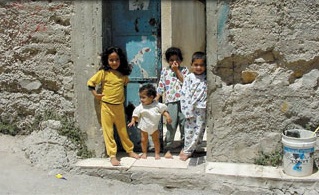
Mark received coverage in Indian Country Today with the headline, “Oglala Lakota traveler sees ‘deep parallels’ in Palestine". Summer 2009 alum.
 What Happened Before That, A booklet about Zionist and Palestinian Nationalist Histories, written in 2008 by Marjorie.
What Happened Before That, A booklet about Zionist and Palestinian Nationalist Histories, written in 2008 by Marjorie.
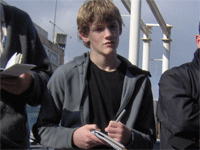
Bar Mitzvah speech, delivered June 2, 2007, by Jacob, Winter 2007 Birthright Unplugged Alum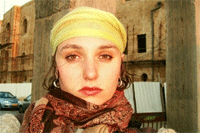
A poem, by Saria, Winter 2007 Birthright Unplugged Alum
What Is Holy Here?, by Marjorie, January 2006 alum
Ben's photo gallery [at Flickr.com], Summer 2005 alum
Erica's photo gallery [at kodakgallery.com], Summer 2005 alum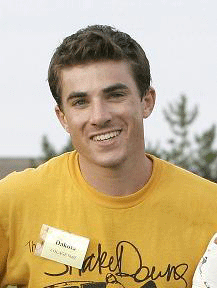
Dakota's blog [on blogspot.com], Winter 2006 alum
Not Next Year, Not in Jerusalem Israeli Palestinians’ – and My Family’s – Desire to Return Home | Rebecca Yael Bak, 2006 Birthright Unplugged Alum | Published in newvoices May 2006 Sri, in a still from a MNBB campaign video, 2010
Sri, in a still from a MNBB campaign video, 2010
Sriram, summer 2005 alum, organizes with The Minnesota Break the Bonds Campaign, (MNBB) a campaign to divest Minnestota state investments from war profiteers.“I went a Birthright Unplugged-led trip in August 2005 as someone already in solidarity with the Palestinian cause. Coming from India, a country with its own colonial past and rich history of struggle, as well as my own personal roots in leftist politics, it was easy to ideologically identify with the Palestinian struggle. But political solidarity does not always beget a commitment to hard-nosed organizing, and it was the Birthright Unplugged trip that proved to be the catalyst for me. It was, to put it mildly, a crucial cornerstone in my life. I saw the resilience, frustration, courage, heterogeneity, anger, love, intelligence, pain, and salubrity of the Palestinian liberation struggle, where survival alone is resistance to oppression. Today, I spend most of my waking hours organizing in the BDS movement in North America, and conducting research on the same. If you are committed to fighting oppression, organizing for a just peace, and standing on the right side of history, take this trip and pay your respects to the Palestinian struggle.
 Lindsey with her group and the Mayor of Bethlehem, 2009.
Lindsey with her group and the Mayor of Bethlehem, 2009.
Lindsey, winter 2009, Birzeit University Right To Education Campaign, an effort to defend Palestinians’ right to education.“I first came to Palestine during the winter of 2009, just a few days into the war on Gaza. An undergraduate International Studies major focusing on human rights and conflict resolution, what I knew and expected of Israel/Palestine, and of my Birthright Unplugged trip, was injustice. I had read about the settlements, the repression, the restriction of movement, the crippling of economies, the Wall; I had immersed myself in the history of expulsion, the long line of disappointments that has been each successive round of peace talks, each of which, in its own way, failing to get the heart of the matter; and I had prepared myself for all these things, knowing that no self-respecting activist, as I hoped to be, could ignore the occupation and apartheid of Palestine, nor all the atrocities that have come therewith.
“In those ten days I spent in Palestine with Birthright Unplugged, I learned more than any scholarly article or textbook could or had told me. Hearing the stories of survival and resistance firsthand solidified my commitment to Palestine activism, my passion for a cause I've come to realize receives barely any of the attention and indignation from the international community it so deserves….
“I write today from the office of the Right to Education Campaign at Birzeit University, where I have worked for several months as an intern helping the organization in its mission to document and advocate against the violations of the basic human right of accessing education which Palestinians endure under Israeli occupation….It was on my Birthright Unplugged trip, standing on the very land for which generations of Palestinians have fought and continue to fight, that I realized it would not be the last time I would do so. I left Palestine determined to return, and did so with the vision to further my role in the movement. I owe so much to Birthright Unpluggedfor this contribution it has made to my life, and wish all the best to any of you who will participate in the future.”
 Kanye in a still from a To Know is Not Enough: How Hampshire Became the First to Divest
Kanye in a still from a To Know is Not Enough: How Hampshire Became the First to DivestKanye a 2006 alum from our first Unplugged trip with a Boycott, Sanctions and Divestment Institute appears in To Know is Not Enough: How Hampshire Became the First to Divest. with over a dozen student activists from Hampshire College's 'Students for Justice in Palestine. The documentary, by Will Delphia chronicles Hampshire College’s successful 2009 divestment campaign.
 A still from a Christmas Break In Palestine, 2010
A still from a Christmas Break In Palestine, 2010Ashley McAdam, Becky Barbrow, and Stuart (William) Pike, three of our 2010 alums, are behind Christmas Break in Palestine, a new documentary exploring “the many social and political costs of the Israeli occupation in the Palestinian territories.” The alums made the film in January 2010 on a university-sponsored trip to Israel and the West Bank (running time: 24 min).

Hello, my name is Jacob and I did my project on Israel/Palestine. I picked this
project because Israel/Palestine is a very controversial issue that I, as a
Jew am at the heart of.
Initially I didn’t think my parents would be okay with it, but as it turns
out my dad had secretly wanted to go there for many years, and we went. The first
couple days we stayed in Jerusalem and did the whole tourist thing (we learned
the western wall isn’t what you think), saw crowds of soldiers with unsettlingly
big guns and equally, if not more disturbingly, young faces holding those guns.
Then we went to the West Bank. That was the biggest wakeup call I’ve ever
had. It was like nothing I’d thought I would experience. I never thought
it would be as bad as it was. It’s one thing to talk about an occupied
territory, but totally another to go there.
I saw a house totally enclosed by a wall, people going without pay for 9 months.
I talked with people whose every attempt to make a life in the occupied territories
has been defeated at every turn.
There is no excuse for terrorism, but there also is no excuse for what the Israeli
army is doing. I saw People under constant fear of military abuse. Children playing
in the shadow of sniper. How would you survive like that? Could you?
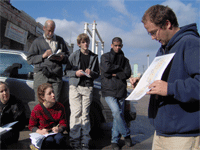
I have trouble relating what I think it means to be a Jew to what is going on over there. In my time at shule I was taught that all of these things where wrong and that the holocaust was a reason to help others, not push them away.
I was taught how important other people are, how important helping them is. During my experience in Israel I often remembered something Pastor Martin Neimoller said. “In Germany first they came for the communists and I did not speak up because I wasn’t a communist. Then they came for the Jews, and I did not speak up because I wasn’t a Jew and then they came for me…” This, I think is the core of Workmen’s Circle. Standing up for what you believe in, helping others in need, because if you don’t then they’ll come for you next.
In the case of Israel Palestine we don’t have that to fear, but should stay true to the cause of justice all the same. Being a Jew to me means rising above the ashes of the Holocaust, overcoming rage, hate, despair to go on to help others overcome it. It means staying true to that mold no matter if Jews, or Christians, or Muslims are being persecuted.
Thank you.
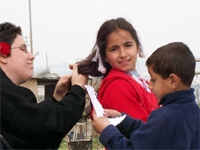
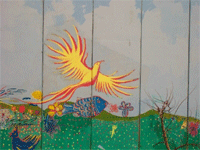
And so we drink tea
Through a yellow gate
we find them
expecting us
young American Jewish
humble Palestinian farmer
beside his rose bushes
tells stories
of the Wall
six year old girl in red
plays with flowers
a laugh of satisfaction
a deep grumble
house enclosed on four sides
two road blocks
a fence
a 9 meter high concrete Wall, muralled
pastel flowers and birds
the girl and her little brother’s only play-mates
on the opposite side
religious Jewish settlers
stone throwing
by dark
she lives in a cage
with a smile like sunshine
laugh like thunder
on a warm summer day
her father speaks of his
broken livelihood
his chicken-coop and green house, destroyed
in the pathway of the Wall
his farm land on other side
over water rich soil
“ it takes me 3 hours to go less than 1 kilometer to my farm.”
sigh
weight of his heart squeezes out air
as if a boulder lay upon his chest
Jewish settlers want his home
the state of Israel wants his water rich soil
he simply wants to live
his eyes always down
face weathered
demeanor tired
a small cough
we listen
an early spring breeze waving our hairs
bird song in our ears
black tea sweetened with sage and sugar
warms our ponderous hands
in the grey West Bank afternoon
i sit wondering
when Fear kidnapped Security
and clothed her in costumes of Hate
… this is not a Wall for Security
it is a Wall for Theft
for Captives…
in the face of that dark gelatinous
vampiristic monster called Injustice
we can shake our fists
scream
tear out our hair
fall on our knees weeping
wave signs and flags
and mourn the dead
but we must resist
the madness the monster brings
what else can we do?
life goes on
so the farmer and his sons serve us tea
and we
and the Wall
listen…
Saria Idana, April 2007
What Is Holy Here?
by Marjorie, 2006 Birthright Unplugged Alum, Boston USAPosted in Journals, Hebron Region | January 15th, 2006
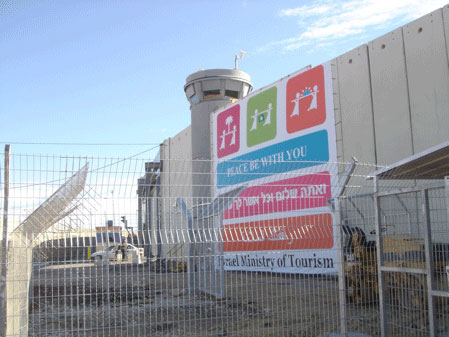
I’m overwhelmed by the desire to share what I’ve learned this week in Palestine, but also overwhelmed by the size of that task. We completed the Birthright Unplugged tour last night, and it’s hard to believe it was only a week long. The amazing people I was blessed to meet, the horrific abuses I was forced to see, the institutional violence I was part of witnessing, the challenges I began to understand, the hope and courage I had the privilege of honoring…so much to tell you…
Too Many Walls
The Wall is called the Separation Wall, the Apartheid Wall, misnamed the
security fence. It’s misnamed for both the security and the fence;
3-stories high, permanent concrete blocks wedged shoulder to shoulder,
with watchtowers
spaced throughout. It is not an overstatement to say that the Wall is creating
a prison out of the West Bank.
Security
Most people think that the Wall follows the Green Line (the armistice
line of the war of 1948 that forms the de facto Israel/Palestine
border and which, under international law, separates Israel from
the occupied territories). Let there be no confusion. It does not.
The path of the Wall steals 10% of West Bank land into Israel.
Though still only partially built, it snakes around the West Bank,
carving once-contiguous areas into separate regions, unable to
access each other. Its path runs around illegal settlements, de
facto annexing them and the land they are on into Israel.
The policy is clear – the most land with the fewest Palestinians
is seized. Once the Wall is completed (its planned completion route
is public information), the entire West Bank will be carved into
non-contiguous “bantustans” that can only be connected
by road through illegal Israeli settlement territory.
Roads
There is also an infrastructure of roads that cuts through the
remaining connected parts of the West Bank, allowing easy access
between Jerusalam and all its “suburbs” (settlements).
At its deepest point, the Wall cuts into the West Bank 22 kilometers
(13 miles). This is all Palestinian land.
I walked through the Bethlehem checkpoint, now called a “terminal.” That’s
very much what it looks like, a massive structure, wedged between
the Wall on either side. It’s a sterile building compared
to an airport terminal, yet more like a prison with a system of
electronic doorways, metal detectors, and soldiers behind bulletproof
glass. Above is a platform where at least one soldier stands with
his gun pointed down. At the entrance is a banner the height of
the Wall: “Peace Be With You” in Hebrew, Arabic, and
English. It’s pink, green, and purple, with Israeli Department
of Tourism at the bottom.
The Bethlehem terminal is well into the West Bank. Perhaps the
department of tourism is confused. I pass through without incident,
and turn back to get close to the Wall. I stand up right against
the hard concrete, look up, concrete to the sky; look right, left,
concrete to both horizons; cry, kick, yell. Silence. I don’t
know what to do. I have never been in a ghetto before…
What is Holy Here?
Hebron, Al-Khalil by the Arabic name, is a Palestinian city in
the West Bank, 35 km from Jerusalem. Throughout the West Bank,
most illegal settlements are built either as “suburbs” to
Israeli cities, or further east in rural areas (most of which will
soon be annexed into Israel de facto by the building of the illegal
Wall). But in Al-Khalil, a group of extremist settlers have planted
themselves in the middle of the old city, the heart of the city.
The daily violence they cause has forced Palestinians to flee the
old city, leaving behind abandoned homes and stores that the settlers
will soon take over, excavating the area and confiscating land.
In the mean time, the doorways are covered in anti-Arab graffiti.
To date, 840 shops have closed. The corridors echo. The Israeli
army, which is supposed to have military jurisdiction over only
half of the city, currently controls all of Al-Khalil. There are
about 200 settlers in the city, and about three soldiers per settler.
The main road of the city has been closed off for Palestinians.
All of the gates to the old city, except for two, have been walled.
Of the two access points, one has an x-ray machine that all Palestinians
must pass through, including children. The Hebron Rehabilitation
Commitee (HRC), an amazing Palestinian organization, works to rehabilitate
buildings within the Old City to try to encourage Palestinians
to return to their homes and shops, so that the settlers will not
confiscate their property. They are fighting an uphill battle.
On the tour with Walid Abu-Al-Halaweh of the HRC, we hear of settler
violence happening nearby. We go to the place where the settlers
have just left, and the ground is covered with rocks, some the
size of my finger, some the size of both my fists. We follow Israeli
army guards to the noise. About 20 girls, none looking older than
14 or 15, are screaming, screaming. They are being gently cloistered
by the army officers
as they continue to scream at the Palestinians around them. The
Hebrew is translated for me: “get out of our country, you’re
dirt, you’re scum.” We stand with a group of Palestinian
men, women, and children, watching them… or rather, our group
is watching them. The Palestinians are mostly waiting to get through
the gateway that
the girls have effectively blocked now for 20 minutes. Three girls
break through the acquiescent army line and race towards us, where
another officer holds them. Grown Palestinian men beside me run
backwards. I am shamed for the men, at the humiliation of having
to fear a 13-year-old girl,
because they know what the soldiers will do to them if they act
in self-defense. They are afraid of the girls, with Jewish stars
around their necks, screaming filth at their neighbors. The soldiers,
who look no older than 19, speak softly with the girls, then turn
around to scream and threaten the Palestinian crowd, telling them
that if they take one step forward, there will be consequences.
For me, as I watch a people to whom I belong behave worse than
any animal on this earth, feet planted, fists clenched, I stare
into the eyes of the girls, hoping to communicate to them their
own shame. I stare into the eyes of the soldiers, “I am witnessing
you, you cannot be held unaccountable.” Finally, the girls
are subdued and moved back to the gateway they came from, a gateway
that has been built from the ruins of the home of Hashem, our tour
guide of the afternoon. He says that most settler violence happens
on Friday and Saturday, on the Jewish holy days…
To Exist is to Resist
1948, known to Palestinians as Al-Naqba, “the catastrophe,” is
not some faraway historical moment for Palestinians. For most people,
it is the year their family lost their land. I stayed with a wonderful
Palestinian family in Dheisha refugee camp – Sa’de,
Nahade, Amani, Jasmine, Wajde, and Sha’de
Alayasa. Their family fled from their village of Zacharia in 1948.
Upon returning to their village at the end of the war, they were
told they could not longer enter. They had deserted their land.
It was now a closed military zone, soon to be occupied and turned
into a Jewish Israeli neighborhood. No one in the family has been
to the village land since 1972. No member of their family is currently
allowed to enter Israel. Two generations later, they continue to
identify as coming from Zacharia, though both generations were
born into the close-quarters of Dheisha, not far from the Wall.
The story is the same for family after family, some who still keep
the key to their front door in their refugee home.
Inside Israel, the story is hardly different. During 1948, while
some villagers fled from the war into the West Bank or Gaza, some
further into Lebanon, Syria, Jordan, and Egypt, some also fled
to what remains Israeli land. They built new villages, sometimes
less than a few miles from their old, now razed or occupied villages.
Over 100 of these villages are still “unrecognized.” Since
the Israeli government does not recognize them, they do not provide
them with water, electricity, or any infrastructure whatsoever,
including schools or clinics. Yet, all citizens in the state of
Israel have a right to these services.
I had the honor of talking with Mohammed Abu-al-Heja, the original
lead organizer of the Unrecognized Arab Villages of Israel. Mohammed,
originally of ‘Ayn Hawd village in the North, started organizing
for the rights of his people in the 1970s and lives adjacent to
his former village. Presently the land and homes of his village
are occupied by the Israeli town of Ein Hod and Nir ‘Etziyon.
Joined by other unrecognized villages throughout the State, they
are slowly getting the Israeli government to recognize their new
homes. So far 5 villages have been recognized. Mohammed is a charismatic
man, slight in build with fiery eyes. Although well into his 60s,
he is not quitting the fight any time soon…
The Israelis say they see no partner for peace, yet the Palestinians
see no partner for justice.
The Wall, the checkpoints, the Israeli army at every turn, the
fight for basic human services, the number of adult males held
in detention or prison at any one time, the refusal to allow access
to farm lands; all of these actions, including closures on villages,
towns, roads, and homes seized between the wall and barbed-wire
fences, increasing unemployment, continued dispossession of land
makes it impossible for justice for these occupied people.
The continuous threat of violence…hope, faith, organizing,
getting pushed down, getting back up, resisting…
Love and anger and sadness and shame and fire and loss and tears
and hope.
Marjorie is a young Jewish-American from Boston on her first trip
to the West Bank. She is with Hannah and Dunya of Boston to Palestine,
who have started the separate Birthright Unplugged organization
to give American Jews a chance to witness the occupation.

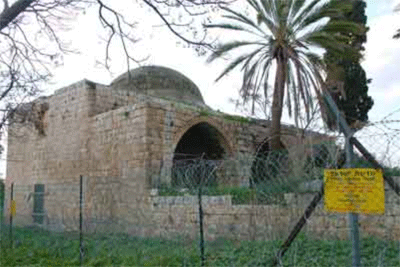
Not Next Year, Not in Jerusalem Israeli Palestinians’ – and My Family’s – Desire to Return Home
Rebecca Yael Bak, 2006 Birthright Unplugged Alum
newvoices | May 2006
Winding through
the Jewish Quarter of Jerusalem’s Old City, past the grand
arch of the destroyed Hurva Synagogue en route to the Western Wall,
most passersby miss the Tifereth Israel synagogue. What they don’t
know is that where now lies a pile of ruins that gathers animal droppings
and tourist trash, once stood the tallest building in the Old City.
Tifereth
Israel (“The Glory of Israel”) was built in the 1860s by
my five-times great-grandfather, Nissan Bak, one of the leaders of
the Hasidic Jewish community in the Old City. Nicknamed by local residents
the “Nissan Bak Shul,” the formerly domed, majestic synagogue
is now reduced to white-gray walls humbled beneath plaster molds
that prevent further deterioration, broken stone steps, and, in what
was
a basement, a pit of rainwater in which a years-old collection of
weeds and debris swim uninterrupted.
According to family legend, the builders of the synagogue ran out
of money before they could build the roof. On a tour of the Old City
right around that time,
Austrian Emperor Franz Josef saw the roofless synagogue and asked what happened.
Without missing a beat, my five-times great-grandfather replied, “He has
taken off his hat in honor of your visit.” Pleased by the compliment,
the Emperor funded the construction of the dome.
In 1948, during the Jordanian siege of Jerusalem in one of the battles
that led to Israel’s declaration of independence, Jewish soldiers,
fighting for their lives and control of the city, used the synagogue as
a fort, and the Nissan
Bak Shul was bombed, becoming a casualty of war. After Jerusalem fell and my
ancestors were led out of the Old City by the British, the Arab Legion dismantled
most of the synagogue and used the stones for other construction projects.
Destruction and Deceit
Several hours north, in the lush green of the northern Galilee, lies the ruins
of another holy building. A dome still covers the stone mosque and, at first
glance, the walls seem to be intact. Closer inspection reveals green vines climbing
down the walls and patches of growth that have moved in where the stones have
fallen out. Three white, stone arches gape wide, and a garden of weeds has flourished
below. The mosque is enclosed by a fence and two rows of barbed wire.
Standing before me is the mosque of El Ghabsiya, the one structure that remains
of a destroyed Palestinian village.
If I had not traveled with Dahoud Badr, a refugee from El Ghabsiya, and coordinator
of the Association for the Defense of the Rights of the Internally Displaced
Persons in Israel, I would have never known that the earth beneath me used to
hold the foundations of a small village.
The mosque of El Ghabsiya seems out of place among a few old trees and scores
of saplings. Abu Badr, a white-haired man with an eagerness to please, brings
out a map to point to the location of his family home. I realize I am standing
on it and shift my feet slightly, as if I can avoid walking on what I cannot
see. Where the homes of family members stood, fledgling trees planted by the
Jewish National Fund struggle to put down roots.
Abu Badr was six years old in May 1948, when the Israeli army attacked
his village and expelled its residents. According to him, village authorities
had made a
pact with Jewish militia leaders not to attack the village, but months later,
after Israel’s declaration of independence, the agreement was effectively
nullified.
“ Early morning,” he tells me, in a mixture of English and Hebrew, “my
mother woke me and told me to wait for her outside the house. She took some things…and
quickly we left the village. I was there crying. It was difficult for me to [walk]
in the mountains. My uncle returned and told me [what was happening], held me,
and we continued. Afterward, maybe I slept, I don’t know. When I woke
up, we were in Kufr Yassif [a nearby village].”
Badr’s family moved several times before returning to El Ghabsiya
in the end of 1948. In January 1950, the Israeli Army returned and ordered
the inhabitants
to temporarily relocate to another village for military purposes. After the
initial two-week relocation, inhabitants repeatedly tried to return to
their homes. Each
time, they were turned away.
Residents of the village appealed to the Israeli Supreme Court, and on November
30, 1951, the Court ruled that inhabitants did have a right to return. Since
then, though, Israeli forces have consistently impeded their homecoming. In 1956,
bulldozers destroyed the homes of the small agricultural village, leaving behind
only the mosque that was once the village centerpiece.
Although most Palestinian villages did not petition the Supreme Court or win
a favorable court ruling when they did, the saga of El Ghabsiya features elements
of commonly heard stories of Palestinians fleeing by force, fear, or a mixture
of both.
According to Nihad Boka’ee, coordinator of the Research, Information, and
Legal Advocacy Unit of BADIL (meaning “alternative,” in Arabic) Resource
Center for Palestinian Residency & Refugee Rights, a Palestinian NGO that
researches and provides resources on questions around Palestinian refugees,
the inhabitants of 531 Palestinian villages were displaced and the villages
have
since been destroyed, abandoned, or are currently inhabited by Israeli Jews.
Of approximately 726,000 Palestinian refugees (UN Economic Survey Mission),
274,000 left their villages in 1948 and remain within Israel proper (British
Survey of
Statistics). An additional 30,000 - 40,000 Palestinians were internally displaced
after the 1967 War.
Despite the fear that Jewish Israelis might be displaced by internally
displaced Palestinians wanting to return to their old villages, the majority
of them—85
percent, quotes Boka’ee—remain empty
and unused.
Former Palestinian Villages, Decades Later
In 1995, frustrated by years of petitioning the government to allow them to return
to El Ghabsiya, Badr and others decided to restore the neglected mosque and to
begin praying there every Friday. Not long afterward, the Israel Land Authority
(MMI, according to the Hebrew acronym), which manages all government land, found
out and blocked off access to the mosque with fences and barbed wire.
The single row of barbed wire put up by the first visit of the MMI did not keep
the residents of El Ghabsiya from their weekly prayers and activities. By now,
though, countless visits later, it is nearly impossible to cross the wires to
get to the mosque.
The site is declared a military area, albeit one populated by young trees and
a dramatic green and brown landscape. Lacking any signs of heightened security
or military presence, it is unlike any military area I’ve ever seen.
Although most holy places have been destroyed along with the homes of the
Palestinian villages, El Ghabsiya is not alone in the survival of its mosque.
Eitan Bronstein,
director of Zochrot (“Remembering”), an Israeli organization that
educates Jewish Israelis about Palestinian narratives of 1948, recounts the
story of Al Majdal, which became the museum for the history of the ancient
Arab/Jewish
port city of Ashkelon. Nowhere in the museum, Bronstein says, is there recognition
that the building used to be a mosque.
In Ein Hod, a popular Jewish Israeli artist colony, also located in the
Galilee, the old mosque has been transformed into a restaurant/bar. Meanwhile,
the town’s
former Palestinian inhabitants live several kilometers away, off a steep and
muddy road in upper Ein Hod, which they established half a century ago after
fleeing from their homes. Only recently, after much petitioning, did Israel
recognize this village, thereby granting them the right to paved roads,
electricity, and
schools.
In Birem, a destroyed village near the Lebanese border, former inhabitants are
allowed to return to the remaining church to restore it, pray, and bury the dead
in the nearby cemetery. Despite a court ruling that granted them, too, the right
to return, Israeli authorities have thwarted their progress.
“There is an [agreement] between us and the government,” remarked
Afif Ibrahim, secretary of the Birem Committee, in an interview. “You
can return dead, but not alive.”
Once Upon a Time in Jerusalem
Where many in my family he sitate to rebuild the once grand Nissan Bak Shul because
of the expense, the residents of El Ghabsiya have far more than their life savings
to contend with. No loose change jar could win them the approval of the Israeli
government.
As much as I want to draw parallels between the stories of these two holy places,
both casualties of the battles of 1948, I realize that mine is the party that
sits on the side of the mighty. The residents of El Ghabsiya have fled to neighboring
towns within Israel, and to the West Bank and Lebanon.
So why return now, over 50 years after leaving? Already an old man, Badr
says he speaks for his family when he asserts, “It is a question of rights.
It is my right. I want to have the right. Maybe I don’t want to come
back, but I must have the right according to human rights law.”
As Badr shows me his mosque, I am reminded of my visits to the Nissan Bak
Shul with a mixture of pride and sadness. But I usually look at the ruins
as a touching
reminder of my family’s history and homeland. In Badr’s visits to
the mosque in El Ghabsiya, he is reminded of his community’s yearning
to return home.
Rebecca Yael Bak graduated from Wesleyan in 2005, with a BA in Women’s
Studies. She is currently in Israel, volunteering with peace organizations
and practicing a British accent for a play. She will be attending Mount
Sinai Medical
School next year.